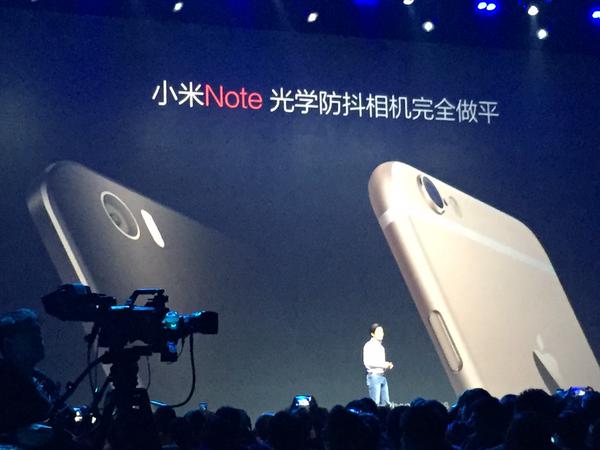

Xiaomi has big dreams and they involve taking over the world.
In case you haven’t noticed there are a lot of mobile device manufacturers based in Asia. And unless you’ve been keeping up with global market share statistics, you probably don’t realize how much of an influence these companies have on the mobile electronics industry.
The 5 Biggest Smartphone Vendors in the World
- Samsung – 23.7% (South Korea)
- Apple – 11.7% (United States)
- Xiaomi – 5.2% (China)
- Lenovo – 5.1% (China)
- LG – 5.0% (South Korea)
Four of the five largest smartphone vendors in the world are based in Asia and the only one that isn’t (Apple) builds their devices with mostly Asian components. While Apple has been able to use this to their advantage and become one of the most powerful companies in the world, Asian companies are rapidly catching up.
And nobody is hotter on the heels of Apple than Xiaomi.
Xiaomi is the Biggest Tech Company You Don’t Know About

Everyone in China loves Xiaomi. Is America next?
Xiaomi was founded in 2010 by a serial entrepreneur named Lei Jun. In just four years, the man known as “the Steve Jobs of China” has turned his company into the world’s most valuable technology startup with an estimated valuation of nearly $50 billion. The only smartphone vendors more powerful than his are Samsung and Apple.
Forbes named Mr. Jun as “Businessman of the Year” in 2014 for his role in disrupting the global market with affordable smartphones, creating a unique distribution model that sells products online only, and for relying strictly on social media for word-of-mouth advertising.
If any company stays true to Steve Jobs’ mantra to “think different”, then it’s Xiaomi.
Xiaomi has been able to succeed for one simple reason: Mr. Jun recruited some of the brightest minds from the best tech companies around the world. With a staff composed of ex-employees from Google, Kingsoft, Microsoft, Motorola, Yahoo!, and more, Xiaomi has an impressive roster of engineers who know how to build great devices.
The biggest consumer market for Xiaomi products is currently China, but the company has set their sights on global dominance. And with the release of their latest flagship devices, they have a good chance at achieving that goal.
Xiaomi’s New Flagship Devices are of Epic Proportions
Smartphones are all about size. They need to be big where it counts and small where it matters. Xiaomi’s newest offerings not only accomplish this difficult task, they are also setting a new standard for the competition to follow – if they can figure out how Xiaomi is able to do it.
Mi Note
- 3D curved Gorilla Glass 3 with metal frame
- 5.7” Sharp/JDI Full HD display (95% NTSC, 1400:1 contrast ratio)
- Snapdragon 801 2.5GHz, Adreno 330, 3GB RAM
- Dual 4G SIM (micro/nano), Dual Standby
- Sony 13MP camera f/2.0, Optical Image Stabilization (OIS)
- 4MP front camera with large 2-micron pixels
- Hi-Fi audio system, 24-bit/192KHz lossless playback support
- 3000mAh lithium-ion battery, Quick Charge 2.0
- Price: $370 for 16GB model, $451 for 64GB
Mi Note Pro
Same as Mi Note but includes:
- 5.7” 2K QHD display (2560 x 1440 at 515 PPI)
- Snapdragon 810 64-bit 8-core, Adreno 430 GPU, 4GB RAM, 64GB eMMC 5.0 Flash
- LTE-CAT 9, up to 450Mbps download speeds
- Price: $532
The specs on the Mi Note and Mi Note Pro are impressive to say the least – especially at this price point. Xiaomi is adamant in declaring their phones aren’t just cheap alternatives either, but actually better than their competition. And the plan is to bring that competition closer to Apple as soon as possible.
“We’re not just some cheap Chinese company making a cheap phone…Xiaomi will be in Western markets within one or two years.”
— Lei Jun
Can Xiaomi Compete with Apple?
Samsung may have a stronghold on the global smartphone market share, but it’s a completely different story in the United States. Over 40% of American smartphone users own an iPhone and convincing them to switch to a different OS powered by a Chinese handset won’t be easy.
But Xiaomi will try to do it anyway.
Xiaomi could be the company that dethrones Apple’s U.S. dominance simply because they do things different. Instead of showing off beautiful designs, they brag about high-end internals. Instead of selling their devices at retail locations, they sell directly to customers via their website. Instead of raising the price of products well above what it costs to make them, they sell them as cheap as possible without making much profit.
The Mi Note and Mi Note Pro likely won’t outsell Apple products in the United States but they definitely will in Asia. By the time Mr. Jun lands on U.S. soil within two years; he’ll also have new devices with even better specs and prices. And if Xiaomi managed to become the world’s third biggest smartphone maker without leaving Asia, they probably have a good chance at making it somewhere else.
Even if nobody else has done it (yet).

Lei Jun mocking the iPhone 6 Plus camera bump.
What do you think? Can Xiaomi compete with Apple? Let us know in the comments below!

